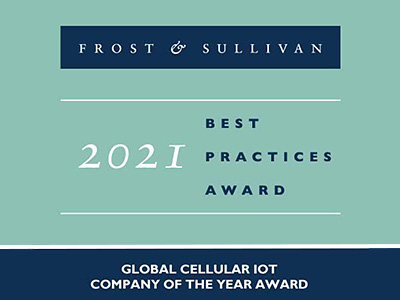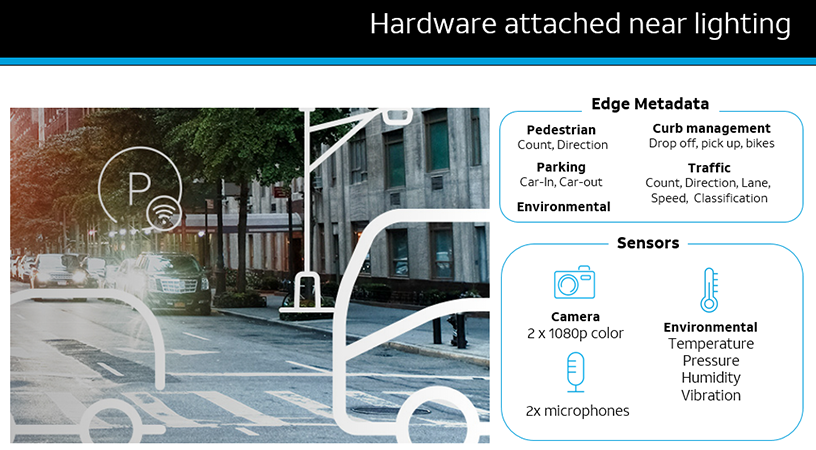Smart lighting solutions are foundation for smart infrastructure
Smart solutions based on lighting infrastructure can lay the foundation for you to launch other smart cities initiatives

What if your existing light poles were capable of more than simply illuminating the street? Imagine a light post that could help lower civic costs, increase city efficiencies, drive economic growth, engage citizens, and improve city life in ways never imagined.
You can. And what’s more, smart solutions based on lighting infrastructure can lay the foundation for you to launch other smart cities initiatives in an affordable way. Some cities may choose an all-in-one style hardware approach, while others may prefer a modular strategy. Whichever route you choose, this type of smart infrastructure frequently starts with lighting and is typically the entry point to help transform cities and buildings; and their use is gaining momentum.
Across the world, cities are installing smart lighting solutions and smart city solutions. According to Data Bridge Market’s 2018 industry report, the global smart lighting market is expected to reach $22.98 billion by 2025 from $8.25 billion in 2017, growing at a compound annual growth rate (CAGR) of 23.5 percent. In addition, global smart cities’ market size is projected to reach $2.57 trillion by 2025 making a CAGR of 18.4 percent, according to a report by Grand View Research, Inc.

Internet of Things (IoT)
Drive your innovation into the future with our best-in-class IoT solutions. Discover why we’re recognized by Frost & Sullivan as the 2021 Company of the Year for Global Cellular IoT.
Rising demand for smart city solutions is being driven by growing urban populations, the need for better management of limited natural resources, and an increasing focus on environmental sustainability. Cities have limited budgets to address single-point solutions such as parking, traffic, gun violence, or air quality, making it imperative to implement multi-sector programs that work harder with limited resources.
Cities are exploring additional funding options through increased taxes, issuance of municipality bonds, and public-private partnerships (PPPs). PPPs are becoming the most prevalent option for municipalities.
Another reason smart lighting infrastructure is gaining prominence is due to the direct impact it can have on cost reduction through efficiency and its ability to support multi-sector programs.
Cities have started to realize they need more tools to manage their vertical infrastructure and their curbside space. Combined, these might be the most valuable spaces that a city owns. Imagine that the streets, curbs, and sidewalks of your city are like the nervous system in your body. There are cars racing by, deliveries being made, transportation picking people up or dropping off, people crossing the street, and lights changing. Being able to capture information from lighting infrastructure and quantifying this activity is akin to putting your finger on the pulse of the city.
This type of citywide solution is the foundation upon which multiple smart cities solutions can be used across city departments to combine disparate data, synchronize city operations, and help enable new revenue streams. By implementing a powerful data intelligence network, cities can enlist the greater community to help solve civic issues using the harnessed data. Citizens, developers, start-ups, universities, entrepreneurs, and companies with niche expertise can bring ideas to the table, and smart cities solutions can be used to bring concepts to life.
Smart cities will get smarter with 5G
This Internet of Things (IoT)-enabled smart city growth will continue in the coming years with the deployment of 5G, which is a key aspect of city modernization. 5G will ultimately support a greater number of sensors than previous technologies, allowing for more data to be collected. 5G powered IoT solutions will support integrated lighting systems, energy, water and waste system management, and surveillance systems that help improve public safety.
A smart city lighting infrastructure solution can be the gateway to a smart city.
Smart solutions based on lighting infrastructure as the entry point for a smarter future
Traditionally, cities globally have been creating value through energy and maintenance savings. For example, new, efficient lighting can save up to 50%1 in energy costs and 88%2 in maintenance costs.
Today, additional value can be created with the installation of a smart lighting infrastructure solution. The combination of LED lighting, city infrastructure and smart city solutions can play a key role in a smart city strategy. City street and other exterior lighting can be upgraded and then serve as the backbone of a network in which services are delivered for the benefit of citizens, businesses, and the city.
Increasingly, cities that install new, smart LED lighting or retrofit existing lighting infrastructure choose systems that include sensor technology. They look for systems that can be upgraded easily to utilize the advantages of IoT applications and are equipped with multi-sensor capabilities maximizing installation efficiencies.
There are multiple ways to approach projects for smart city solutions based on lighting infrastructure.
AT&T’s innovative solutions are comprised of sensors (including cameras), edge storage, and analytics. The solutions come in both modular and all-in-one hardware forms. The deployment of these types of solutions create a digital platform whereby the city can offer a multitude of applications. With the ability to help improve transportation, public safety, air quality, pedestrian flow, and curb management, including parking enforcement, the benefits these and other smart city solutions can bring to city life are seemingly endless.
A potential solution could consist of the elements below.

In general, smart city lighting solutions provide the following potential benefits:
- Energy and maintenance cost savings with the ability to brighten lights during events or dim lights when needed— alerts are sent if you have a daytime burning light or a light not burning at night
- Enhanced public safety with the additional lumens LED lights project to reduce energy consumption • Reduction in traffic accidents due to increased visibility of hazards
In addition, a smart city lighting infrastructure solution can be the gateway to a smart city with the following use cases and their potential benefits:
- Public safety through video surveillance (i.e. gunshot detection)
- Traffic light controls
- Curb management, including parking and pedestrian insights
- Traffic management
- Environmental impact with potentially less carbon footprint due to lower energy consumption
- Upgrade connectivity and citizen engagement with public Wi-Fi
A smart city infrastructure for many cities, small or large, can be the digital platform for a smart city network, enabling a multitude of smart city solutions that are most relevant to the city, driving efficiencies, new revenue opportunities, and new applications for their residents.
Share
Share this with others